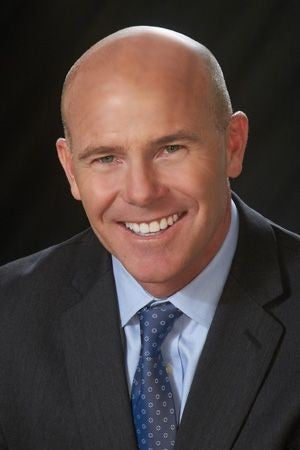Executive compensation expert weighs in on Sanford’s approach
Nov. 18, 2021
An expert in health care executive compensation took a look at Sanford Health’s most recent 990 IRS filing and said the numbers didn’t surprise him.
“It’s kind of what I would have expected,” said Theodore Sharp, a senior client partner in the Boston office of global consulting firm Korn Ferry.
“I look at a bunch of health care system 990s to see what’s going on … and it was sort of right down the middle, particularly for one that was signed awhile ago.”
Sharp specializes in incentive plan design, executive compensation benchmarking, employment and severance agreement design and evaluation, golden parachute excise tax mitigation and calculation, nonqualified deferred compensation and the tax and accounting treatment of equity compensation.
Sanford reported about $65 million in payouts to departing executives in 2020. Of that, $44 million went to CEO Kelby Krabbenhoft, who retired a year ago after 24 years with the system. Additionally, Krabbenhoft received about $5 million in reportable compensation in 2020, which is a combination of his salary and two incentive-based payments reflecting one from 2019 and one from 2020.
The tenure is what helps explain the payout, Sharp said.
“If someone were to say you got a $49 million payout and you’d been CEO for a year, that’s a whole different story,” he said. “Long-tenured agreement upon benefits at termination, nothing in particular jumps out at me about it.”
The defined benefit executive retirement plan, which Sanford began offering in 1983, provided lifetime annual payments to plan participants based on their salary history and years of service. Most health systems have moved away from those plans, Sharp said. Payouts can be large, particularly based on a participant’s salary history and tenure.
“What happens in not-for-profits is it ends up over the long term following what the for-profit world does,” he said. “Probably because most of the for-profit execs are on not-for-profit boards. Back in the early 2000s, you began seeing defined benefit SERP (supplemental executive retirement plans) get unwound, frozen … and then termination. So it didn’t surprise me at all to see something like that.”
The compensation structure also is in line for a 24-year employee at an organization of $6.7 billion in annual revenue, he said.
That also explains his severance, $15 million, which likely was based on his base pay plus bonus in his final year, Sharp said.
At the time Krabbenhoft likely signed the employment agreement that detailed his separation arrangement, it would have been common in health care nonprofits to set that amount at three times base plus bonus, Sharp said.
“Maybe a decade ago, for-profits went from three times base and bonus down to two times. That has started to happen in not-for-profits, but the deal he had I would imagine was loosely based on three times base and bonus,” he said. “When he signed that deal … that would have been right down the middle, and that’s roughly what it was.”
Part of Krabbenhoft’s final payout also involved a retirement plan funded based on his agreeing to remain with the system and to complete a succession plan.
“Organizations who aren’t prepared if a CEO leaves end up stalling their strategic plans until they can get new folks in,” Sharp said. “So when you have someone long-tenured like that, you would expect them to embrace and be part of strategic planning.”
As far as tying executive retirement pay to it, “I’ve seen it happen before,” he said. “I’d not say it’s the majority of cases, but it’s not the first time I’ve seen that.”
Nothing particular stood out about Sanford’s other retirement payouts, other than the above-average number of them that came in a single year, Sharp said.
“That happens,” he said. “If you look at a group, a peer group of not-for-profit companies in any given year, you’ll find out of a group of 15 companies, one or two have outsized numbers for a year. It’s a perfect storm of people retiring or on severance or whatever it is. It always happens, and it always catches media attention. The way it happened probably caused a little more stir.”









